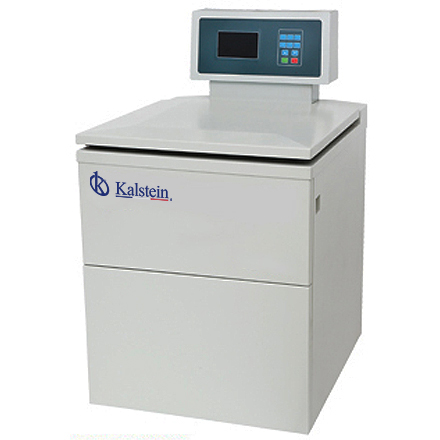When you start setting your laboratory, one of the first devices you need to think about is a centrifuge. This is a device that is capable of separate any kind of samples, depending on your needs and tests. High Speed Refrigerated Centrifuge work by a separation method where the components of a sample are separated based on their density according to the centrifugal force they experience. With these devices, samples are spun at > 5000 rpm. This centrifuge type is able to generate a speed of about 60000 g and they are useful to collect microorganisms, cellular debris, larger cellular organelles and proteins precipitated by ammonium sulphate.
High speed refrigerated centrifuge
In a solution, particles whose density is higher than the solvent, sediment and the particles that are lighter than it, float to the top. There is to know that the greater the difference is in density, the faster the sample moves. If there is no difference in density (isopycnic conditions), the particles stay steady. The centrifuge process plays a crucial role in biochemistry or biotechnology as it is a non-dispensable part in every method regarding biological study right from the separation of cell organelles to complex experiments involving separation of sub-cellular fractions.
Centrifuges are extremely dangerous instruments if not properly maintained and correctly used. That is why you should always read and understand the operating manual. Another aspect you should keep in mind is that when centrifuging hazardous materials like pathogenic microorganisms, infectious viruses, carcinogenic, corrosive or toxic chemicals, radioactive materials), samples should be kept in air-tight, leak-proof containers, in order to prevent aerosol formations arising from accidental spillage of sample, which would contaminate the rotor, centrifuge and possibly the whole laboratory.
Laboratory centrifuges
You must follow some recommendations in order to check you laboratory centrifuge without hurting yourself or damaging the device. First, you need to balance the load each time the centrifuge is used. In addition, the disconnect switch should automatically shut off the equipment when the top is opened. Another important thing is that you should not overfill the centrifuge tubes. Ensure that they are hung properly. There is another thing you need to be aware of and that is that the lid must be closed before starting the centrifuge. It is very important that you do not overload a rotor beyond the rotor’s maximum mass without reducing the rated rotor speed.
Moreover, you need to check the O-rings and grease the seals routinely with vacuum grease. Make sure that you do not use harsh detergents to clean the rotors, especially aluminum rotors. Use a mild detergent and rinse with deionized water, if possible. In case you are handling flammable and/or hazardous materials, keep the centrifuge under negative pressure to a suitable exhaust system. We also recommend to keep a usage and maintenance log. This way you will know how your laboratory’s personnel is using the device and how often they maintain it.
You should inspect every part of the centrifuge each time you use it. Always look for signs of corrosion of the rotors. You need to know that metal fatigue can cause any rotor to fail. Another important aspect is the coating of the rotor; you must check that it is not damaged. In addition, you have to check the cone area for cracks; this is a highly stressed area during rotation. Finally, another area you can constantly check is the cracks in the tube gravity; make sure there are not any corrosions.
Know more of our High Speed Refrigerated Centrifuges. Visit our catalog HERE

